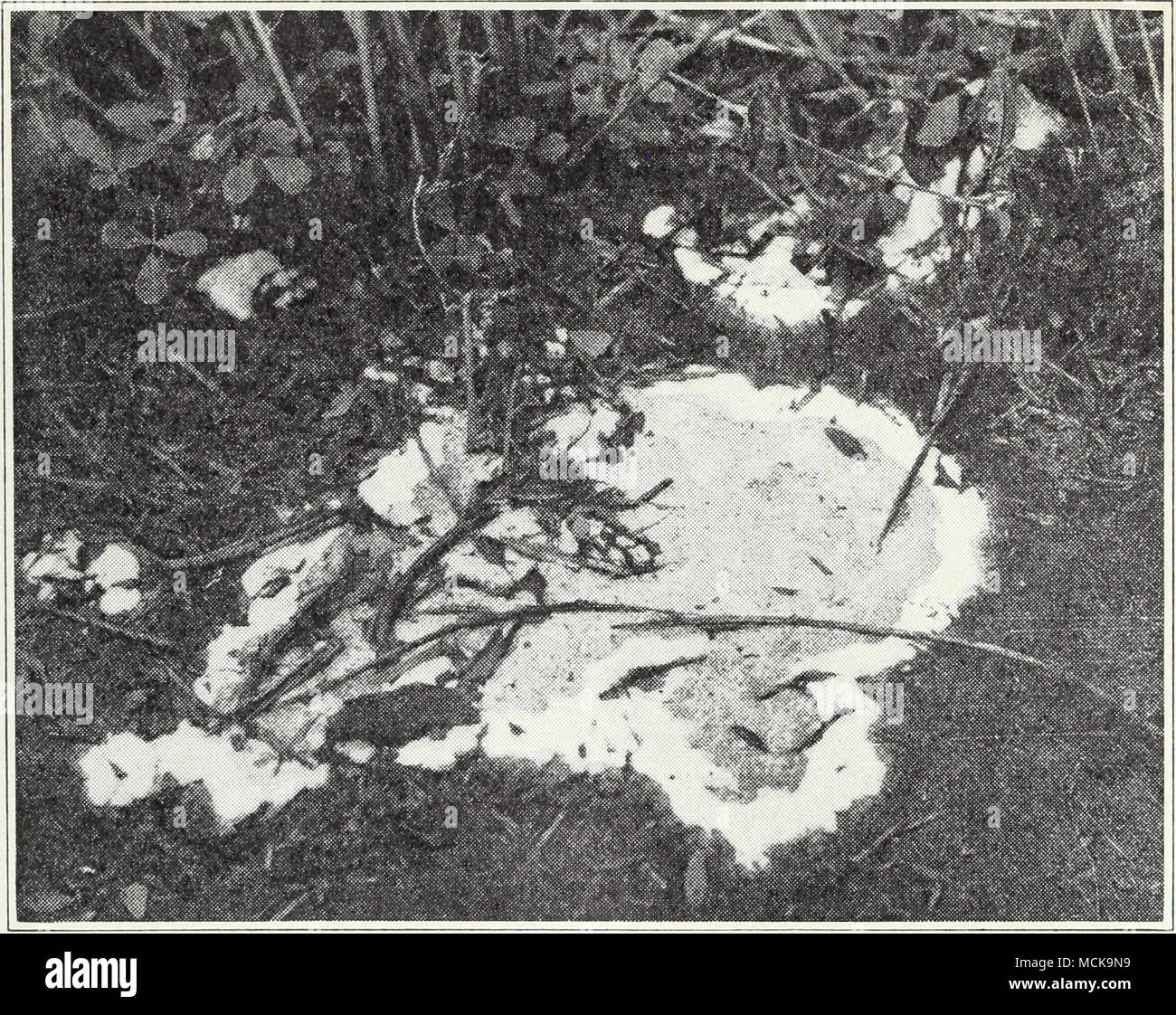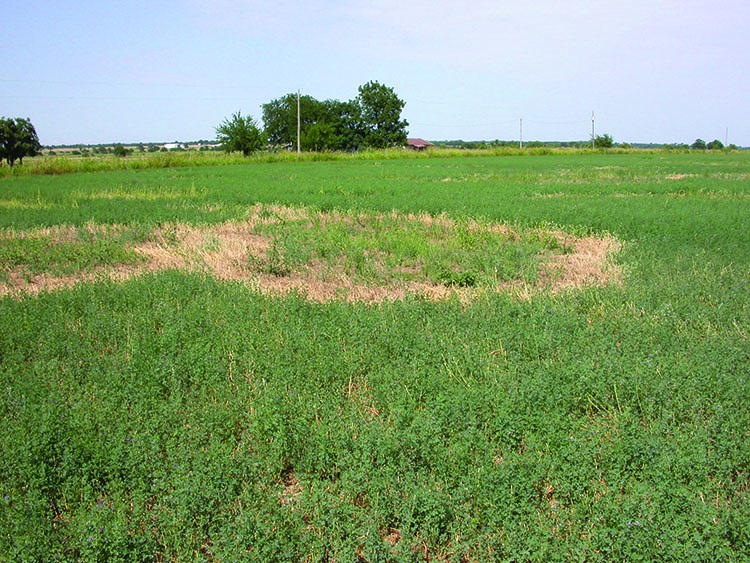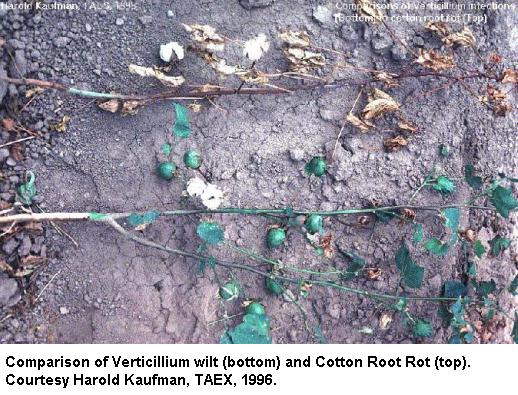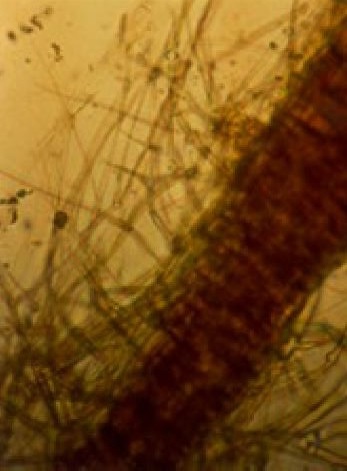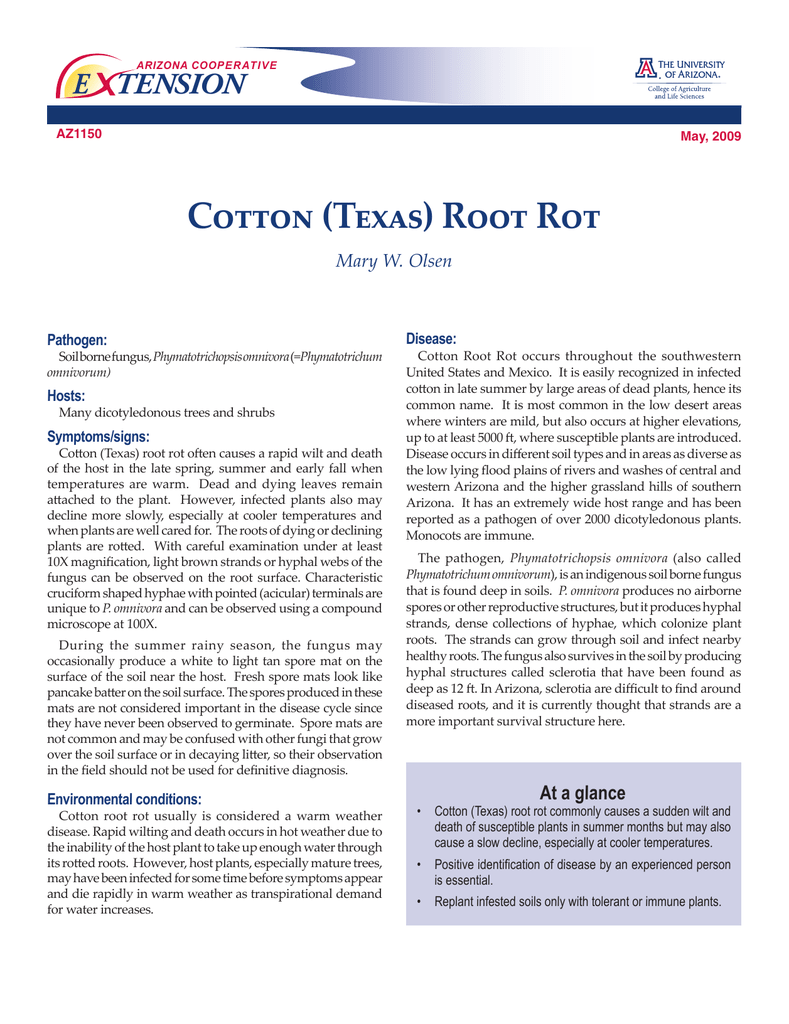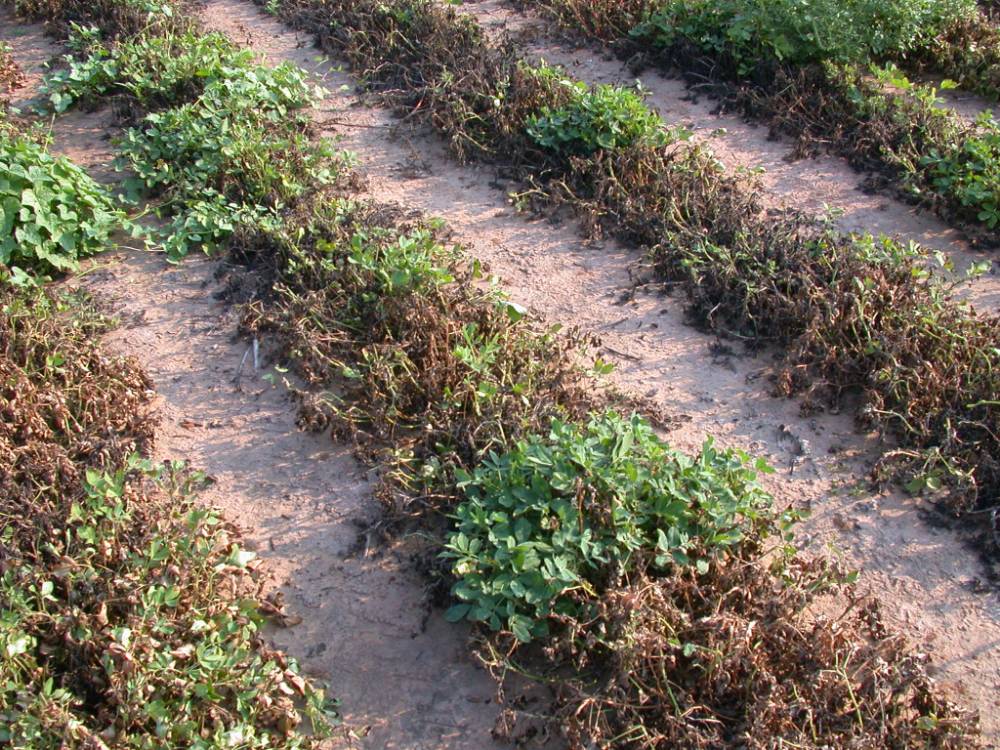Cotton Root Rot Spore Mat
What can it be confused with.
Cotton root rot spore mat. The fungus attacks more than 2 000 species of broadleaf plants but does not affect monocots grasses. Grape cotton root rot is active in the summer months when soil temperatures are at least 80 f. Grapes with cotton root rot. Cotton root rot also known as texas root rot and by its scientific name phymatotricum root rot is caused by the the soil borne fungus phymatotrichum omnivorum and is responsbile for serious and usually fatal root rots on more than 2 300 species of plants.
Sclerotia germinate and produce strands that grow through soil and eventually contact roots. As new plant species were brought into our area plant pathogens whether native or not have found their way in to our landscape as well. Avoid infested locations plant non hosts or resistant species. These mats vary in size from 2 to 16 inches in diameter and are white to tan colored.
The fungus often forms spore mats on the soil surface during warm rainy weather. Spore mats are evidence of the fungal presence but currently spores are thought to have no function in the survival infection or spread of the po fungus. Phymatotrichum root rot also known as cotton root rot or texas root rot is caused by the soil borne fungus. Fresh spore mat of cotton root rot fungus.
A unique feature of this disease is the production of spore mats that may form on the soil surface near dead. Cotton root rot phymatotrichum omnivorum affects more then 2 000 plant species according to texas a m university. Phymatotrichum root rot also known as cotton root rot and texas root rot is caused by the fungus phymatotrichopsis ominvorum. The fungus thrives in clay loam soil conditions where ph is between 7 0 to 8 5.
27 c and air temperature exceeds 104 f. Rapid wilting and death occurs in hot weather due to the inability of the host plant to take up enough water through its rotted roots. One disease that has over 2 300 host species 1 800 dicots is known as phymatotrichopsis omnivora also referred to as cotton root rot texas root rot and ozonia root rot. Spore mats and conidia.
Thus cotton root rot is usually considered a warm weather disease. This type of root rot disease is extremely difficult to control but the following information may help. The strands colonize the root. 40 c usually in the months of august and september.
Factors affecting the disease and fungal survival this fungus can survive many years in soil as sclerotia which can occur at depths of 7 feet. Spore mat on the moist soil surface during the summer monsoon season. Cotton root rot has been reported in texas counties from the red river to the rio grande and from tom green county to the neches river. Alkaline soils soils low in organic matter.
Spore mats around infected plants.

